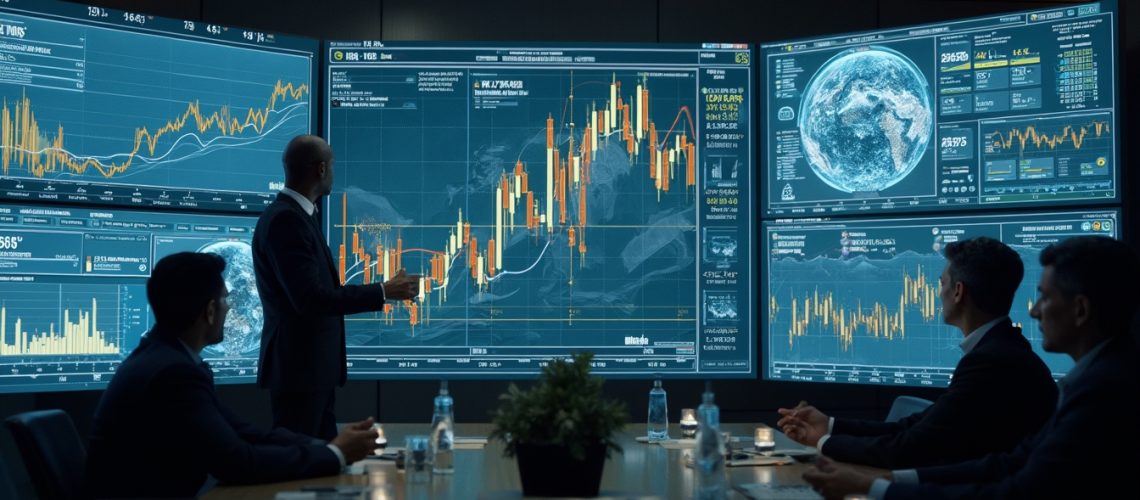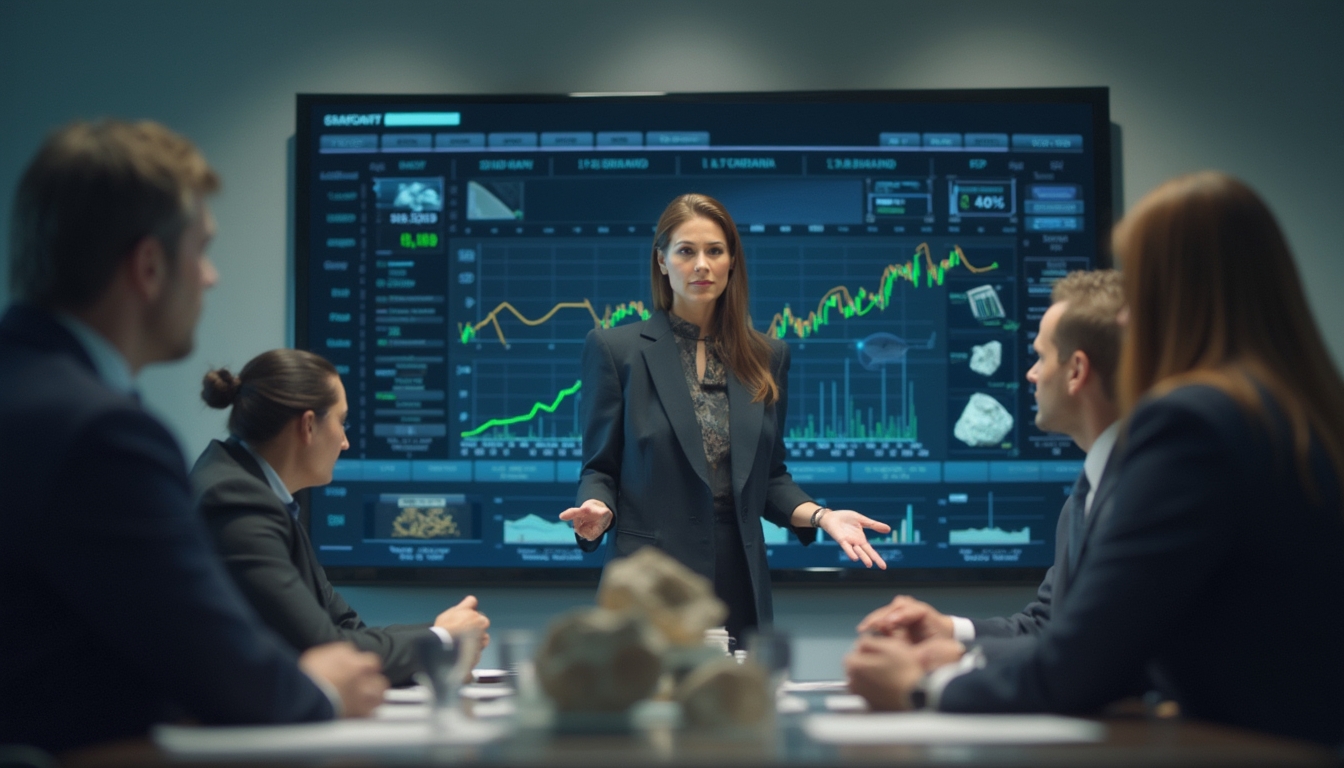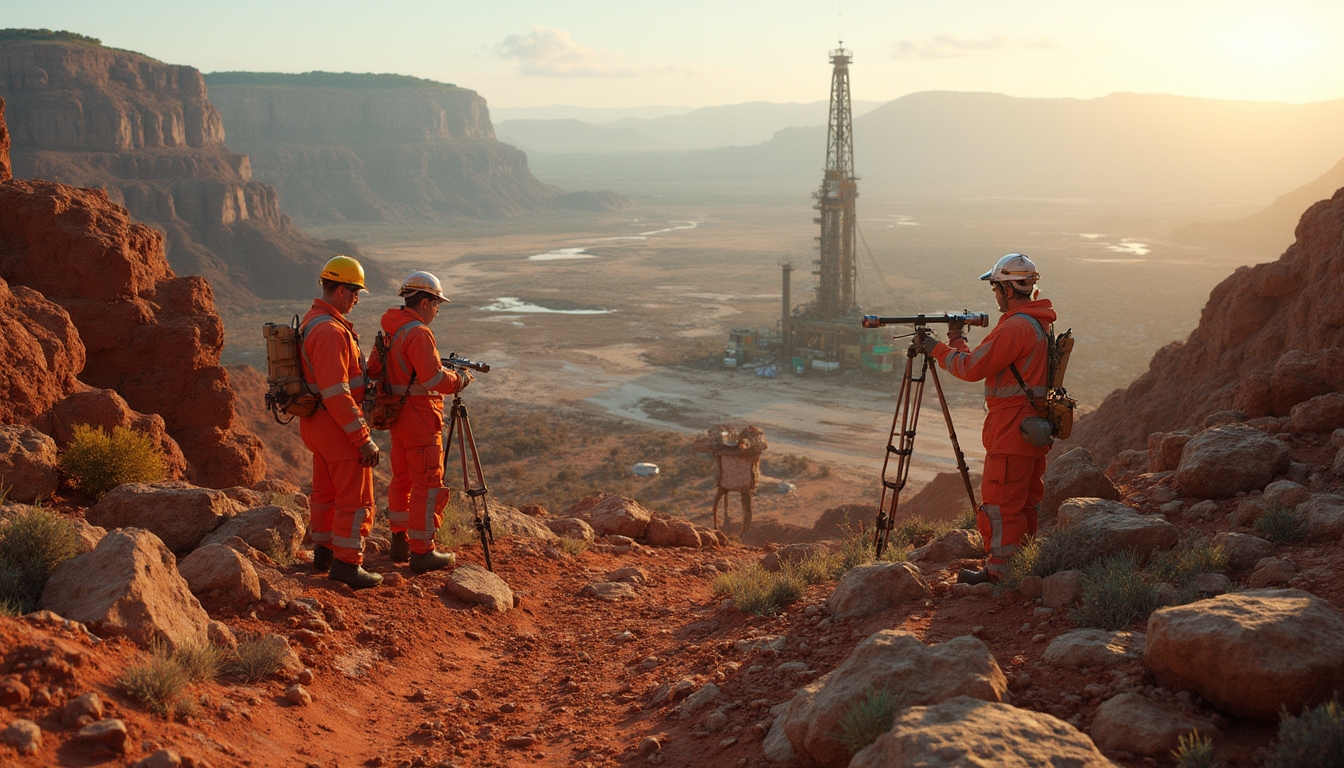Copper and Gold Commodity Market Trends: Expert Insights on Investment Opportunities
In the dynamic world of commodities, strategic insights from industry experts reveal a compelling narrative of potential and transformation. The current climate has investors closely examining copper and gold commodity market trends as market participants search for under-valued opportunities. This period, characterised by high volatility and evolving supply‐demand dynamics, challenges stakeholders to scrutinise both traditional models and innovative investment frameworks.
Both copper and gold consistently stand out due to their fundamental roles in global economic stability. Investors are increasingly informed by data and expert analyses to capture opportunities in a market that is shifting from conventional asset classes to tangible commodities.
The Current State of the Commodity Cycle
The commodity market stands at a critical juncture, with many experts noting that we are currently positioned at the bottom of a long-term cyclical trend. Over the past 10–12 years, commodities have underperformed compared to financial assets, creating an attractive scenario for long-term investment. This downturn has led to a market environment where historical lows in commodity valuation may offer the perfect entry point for discerning investors.
Key market drivers include:
- Emerging geopolitical tensions that reshape supply routes
- Complex challenges in material sourcing
- Significant underinvestment in production sectors over the last decade
These factors collectively set the stage for a potential inflexion point. Investors are urged to consider that the evolving landscape of copper and gold commodity market trends might soon translate into a robust upward momentum as supply constraints and growing global demand converge.
Geopolitical Tensions Reshaping Commodity Markets
Global political dynamics are fundamentally disrupting traditional material sourcing channels. For instance, political instability and regional conflicts have increased supply chain complexity, leading to higher risk premiums for conventional sourcing strategies. As uncertainty grows, there is a visible pivot towards more resilient and stable commodity investments.
The multifaceted impact of these tensions can be summarised as follows:
- Increased supply chain complexity due to regional conflicts.
- A reevaluation of risk leading traditional financiers to reassess asset classes.
- A surge in investor interest in tangible assets such as precious metals and industrial commodities.
In many cases, disruptions in trade routes have steered investment focus towards regions like the middle east. This is reflected in initiatives to capitalise on middle east investment, which offer unique insights into both regional challenges and opportunities.
Investment Opportunities in Copper and Gold
Projected supply deficits over the coming years have created compelling investment scenarios across multiple sectors. The outlook for copper, for instance, is buoyed by the following factors:
- Expanding data centre infrastructure that demands extensive electrical wiring and connectivity.
- Accelerating electric vehicle (EV) transitions, which require significant copper usage.
- Continued expansion in the renewable energy sector, where copper is indispensable.
This surge in copper utilisation validates the importance of understanding robust copper market. For a detailed external perspective, investors might consider insights into copper price trends, which provide an extensive global overview of how prices are set to evolve.
Gold markets, on the other hand, are receiving renewed investor attention, as prices steadily approach critical thresholds like the $3,000 mark. The underlying sentiment is driven by:
- Scores of institutional investors diversifying into gold as a safe haven.
- A growing narrative around gold’s inflation-hedging properties.
- Increasing global uncertainty which reinforces gold's status as a stability asset.
Amid these dynamics, analysts have noted that the market is experiencing strong gold trends, reaffirming gold’s enduring appeal.
Mining Companies' Strategic Adaptations
Modern mining enterprises are no longer relying solely on historical practices; they are actively embracing innovative strategies to navigate increasingly complex market dynamics. This is evident in their approach to sustainability, operational expansion, and technological integration.
Notable strategic adaptations include:
- Expanding and modernising existing operational capabilities to boost output.
- Prioritising energy-efficient and environmentally sustainable project designs.
- Embracing digital technologies and automation to streamline exploration and production processes.
For example, a number of mining companies are incorporating advanced equipment such as the hybrid drilling technologies. These innovations not only accelerate the exploration process but also reduce the environmental footprint, striking a balance between economic performance and responsible resource management.
Additionally, many companies are actively engaging with international research institutions to stay abreast of global commodity research, ensuring their projects align with broader market insights.
The Los Zules Project: Sustainable Mining Innovation
A prime example of next-generation mining is showcased in the Los Zules project. This initiative highlights the integration of sustainable practices with cutting-edge technology. The project is designed to set new benchmarks in production efficiency and environmental responsibility, featuring:
- Architectural designs that substantially lower energy requirements.
- Full integration of renewable energy sources to power operations.
- Robust post-mining land use plans to ensure long-term ecosystem stability.
The projected economics of the project are impressive:
- An estimated production of 400 million pounds of copper annually.
- Projected revenue of approximately $1.6 billion.
- Production costs as low as $1 per pound, paving the way for a potential 75% gross margin.
These statistics underscore how modern initiatives drive forward battery technology trends, reinforcing the broader trend towards sustainability in the mining sector.
Challenges in Mining Sector Investment
While the outlook for mining remains positive, investment in the sector faces significant challenges that must be navigated with careful strategy and innovative thinking. Among the key obstacles are:
- Persistent negative public perception surrounding mining practices.
- A decline in interest among young professionals entering the field.
- Reluctance from traditional leadership to embrace rapid technological change.
Some potential strategies to counter these challenges include:
- Emphasising the role of technology and automation in reducing environmental impact.
- Showcasing diverse skill sets and success stories to attract a younger workforce.
- Enhancing transparency in investor communications to rebuild trust.
- Highlighting robust environmental and social governance (ESG) practices.
In an era of transformative change, leaders in the commodities market are increasingly leveraging robust global commodity research to support their investment propositions and uplift industry standards.
The Future of Mining: Technology and Innovation
The mining sector is on the cusp of a technological renaissance. New innovations are reshaping traditional operations through automation, advanced data analytics, and robotics integration. Looking ahead, several trends are poised to define the future of mining:
- Enhanced automation capabilities, leading to significant improvements in operational efficiency.
- Wider adoption of artificial intelligence (AI) for predictive maintenance and resource allocation.
- A systematic rebranding of the industry, aimed at overcoming negative perceptions and attracting talent.
- Diversification of the professional skill sets required, with a convergence of mining expertise and digital technology.
This forward momentum is not just about survivability in a competitive market—it is about ushering in a new age of sustainable production that aligns with global climate initiatives.
Investing in Mining Commodities: Key Considerations
For investors evaluating opportunities in the mining sector, it is vital to consider key factors that determine long-term viability. Some of the most critical considerations include:
- Leadership and organisational commitment to sustainable practices.
- Transparent and robust communication strategies that provide clarity on risk and opportunity.
- Demonstrable growth potential that is supported by practical financial and operational metrics.
- The ability to integrate innovative technologies that streamline production and reduce overheads.
These elements form part of a holistic approach when assessing the potential of mining investments.
Conclusion: Evolving Commodity Investment Landscape
The contemporary commodity market represents a complex tapestry of geopolitical risks, emerging technologies, and evolving production methods. As the global economic environment shifts, so too does the investment landscape, with particular focus on copper and gold commodity market trends. Key takeaways include:
- The inherent potential in both copper and gold markets driven by supply deficits and rising demand.
- The essential role of technological innovation and automation in reshaping the mining industry.
- A growing commitment to sustainable development practices that balance profit with ecological responsibility.
- The transformative power of modern initiatives, such as the Los Zules project, in setting new industry benchmarks.
In an age where traditional and modern investment strategies converge, understanding these deep-rooted trends is critical. Investors and industry participants must remain adaptable, leveraging the insights from contemporary research and technological advancements to navigate this evolving landscape successfully. As you continue to evaluate opportunities, remember that the trends observed in copper and gold commodity market trends are likely to drive both short-term manoeuvres and long-term strategic shifts across the global market.
Ready to Uncover the Next Big Mining Opportunity?
Discover fast, AI-powered insights into significant ASX mineral discoveries with Discovery Alert, a service designed to simplify complex commodity trends and help both new and experienced investors identify potential investment opportunities. Start your 30-day free trial today and transform how you approach mining and commodity investments.







